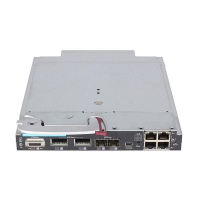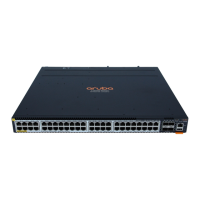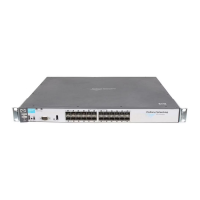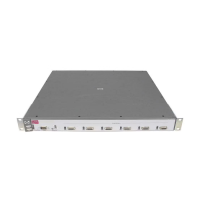83
Examples
# Display OSPF neighbor statistics.
<Sysname> display ospf peer statistics
OSPF Process 1 with Router ID 10.3.1.1
Neighbor Statistics
Area ID Down Attempt Init 2-Way ExStart Exchange Loading Full Total
0.0.0.0 0 0 0 0 0 0 0 1 1
0.0.0.2 0 0 0 0 0 0 0 1 1
Total 0 0 0 0 0 0 0 2 2
Table 23 Command output
Field Description
Area ID
Area ID. The state statistics of all the routers in the area to which the router belongs is
displayed.
Down Number of neighboring routers in Down state in the same area.
Attempt Number of neighboring routers in Attempt state in the same area.
Init Number of neighboring routers in Init state in the same area.
2-Way Number of neighboring routers in 2-Way state in the same area.
ExStart Number of neighboring routers in ExStart state in the same area.
Exchange Number of neighboring routers in Exchange state in the same area.
Loading Number of neighboring routers in Loading state in the same area.
Full Number of neighboring routers in Full state in the same area.
Total
Total number of neighbors under the same state: Down, Attempt, Init, 2-Way, ExStart,
Exchange, Loading, or Full.
display ospf request-queue
Syntax
display ospf [ process-id ] request-queue [ interface-type interface-number ] [ neighbor-id ] [ | { begin |
exclude | include } regular-expression ]
View
Any view
Default level
1: Monitor level
Parameters
process-id: OSPF process ID, in the range of 1 to 65535.
interface-type interface-number: Specifies an interface by its type and number.
neighbor-id: Neighbor’s router ID.
|: Filters command output by specifying a regular expression. For more information about regular
expressions, see Fundamentals Configuration Guide.
begin: Displays the first line that matches the specified regular expression and all lines that follow.

